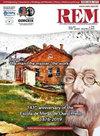巴西米纳斯吉拉斯州Três Marias地区 o Francisco河沉积物金属生物利用潜力
Q3 Earth and Planetary Sciences
引用次数: 0
摘要
沉积物中金属的污染非常普遍,在世界范围内经常进行研究,目的是评估这些污染物对环境的影响。沉积物中金属的总体浓度不足以评估毒性,因此需要进一步的研究和分析。为了估算沉积物中金属的潜在生物利用分数,采用了酸挥发性硫化物/同时提取金属(AVS/SEM)方法。在特雷斯马里亚斯市(MG)的一家锌冶炼厂附近,从圣弗朗西斯科河及其支流收集了7份一式两份的样品。AVS/SEM结果表明,尽管总体金属浓度高于TEL(阈值效应水平:预计对生物群产生不利影响的化学浓度),但来自圣弗朗西斯科河的样品的生物利用度潜力相对较低(毒性不确定)。这些结果应该在决定污染沉积物的管理之前加以考虑。关键词:AVS-SEM,生物利用度,金属,圣弗朗西斯科河本文章由计算机程序翻译,如有差异,请以英文原文为准。
Metal bioavailability potential of São Francisco river sediments in Três Marias (Minas Gerais - Brazil)
Sediment contamination by metals is very common and frequently researched worldwide with the objective of assessing the environmental impact of these contaminants. The bulk metal concentration in sediments is not enough for assessing toxicity and therefore, needs additional research and assays. To estimate the potentially bioavailable fraction of the metals in the sediment, the acid-volatile sulfides / simultane ously extracted metals (AVS/SEM) method was used. Seven samples in duplicate were collected from the Sao Francisco River and its tributary, near a zinc metallurgical plant in the city of Tres Marias (MG). The AVS/SEM results suggest that, although the bulk metal concentrations are above TEL (Threshold Effects Level: A chemical concentration above which some adverse effect to biota is expected), samples from the Sao Francisco River presented relatively low potential for bioavailability (uncertain toxicity). These results should be taken into consideration before deciding about contaminated sediment management. Keyword: AVS-SEM, bioavailability, metals, Sao Francisco River
求助全文
通过发布文献求助,成功后即可免费获取论文全文。
去求助
来源期刊

Rem-Revista Escola De Minas
工程技术-工程:土木
自引率
0.00%
发文量
0
审稿时长
6-12 weeks
期刊介绍:
REM – International Engineering Journal (antigua REM – Revista Escola de Minas) es la primera revista técnica de Sudamérica. Fue fundada en enero de 1936 por los estudiantes de la Escuela de Minas de Ouro Preto y desde entonces se ha especializado en la publicación de artículos en las áreas de la Ingeniería Civil, Geología, Metalurgia y Materiales y, Minería y Mecánica y Energía.
Su objetivo es servir como un medio de publicación para los trabajos técnicos y científicos originales de investigadores nacionales y extranjeros en esas áreas. Contribuciones originales (artículos y cartas) son aceptadas. Artículos de revisión dependen de la invitación y/o análisis de los Editores.
El envío de artículos para su publicación implica que el trabajo no ha sido publicado previamente, que no está siendo presentado para su publicación en otra revista y no se publicará en otro lugar, en la misma forma, sin el permiso, por escrito, de los Editores/Autores.
 求助内容:
求助内容: 应助结果提醒方式:
应助结果提醒方式:


